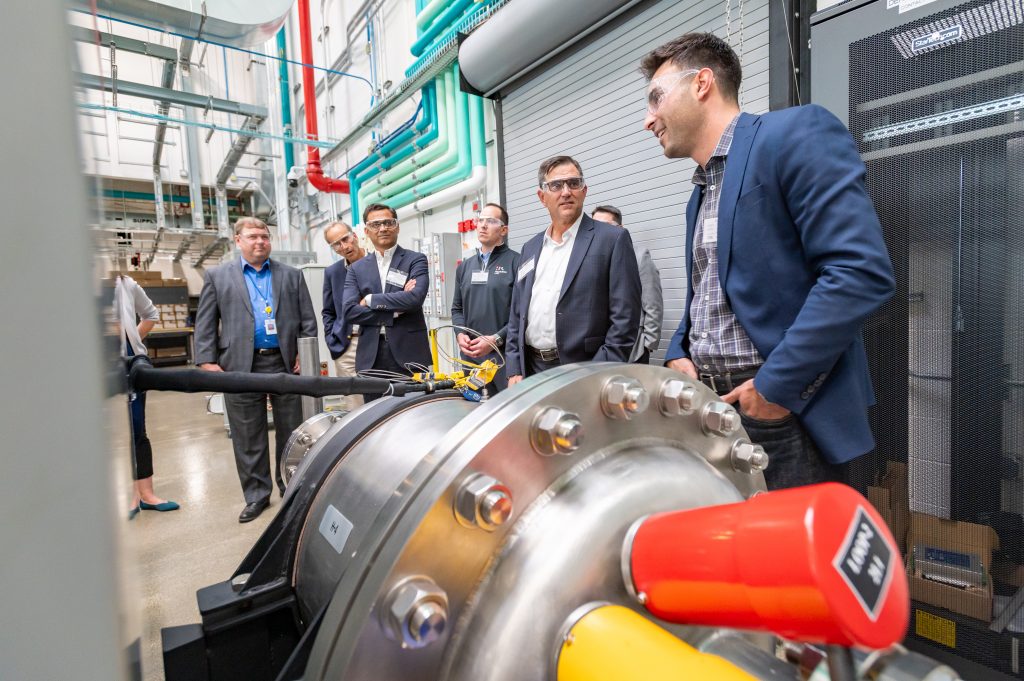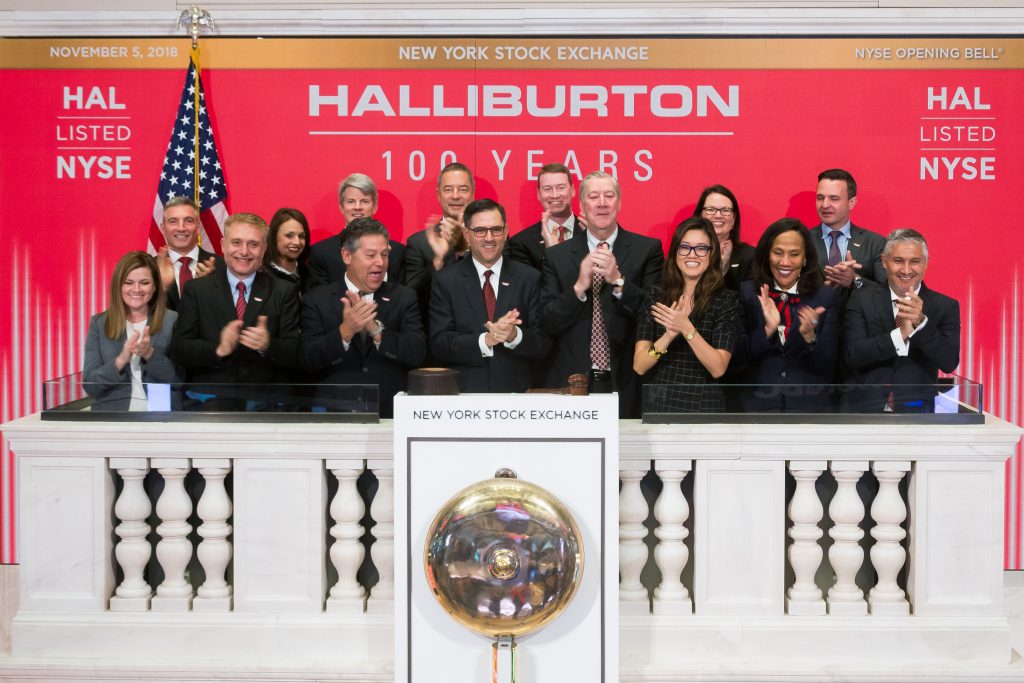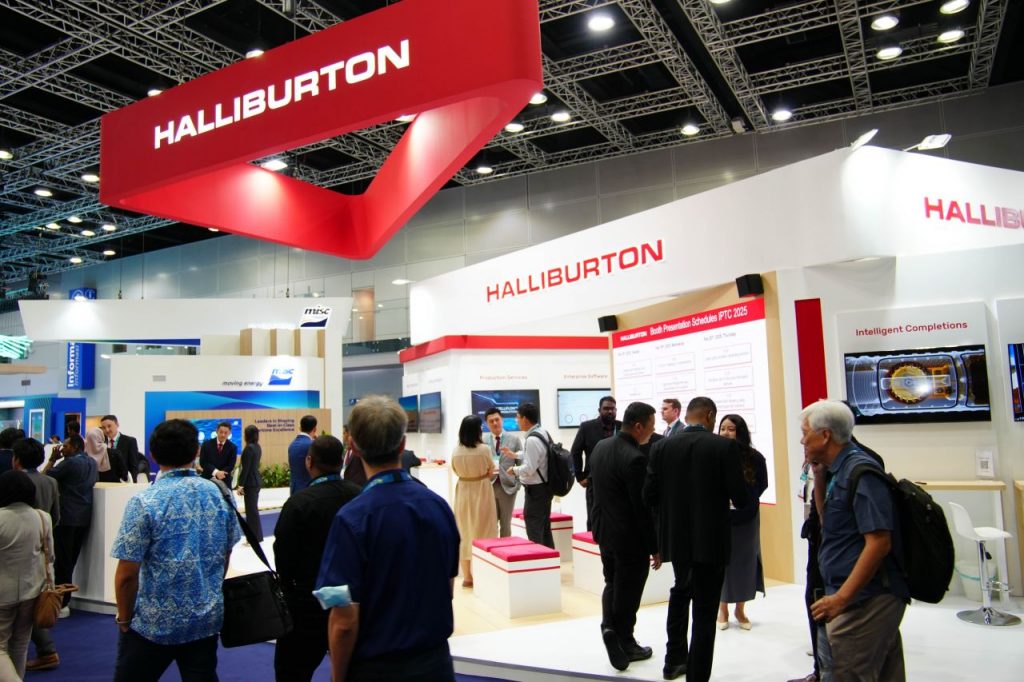
“I also saw the opportunities at Halliburton were immense,” Jeff Miller says of his initial attraction to the company he now runs. Miller is eight years into his role as the CEO of Halliburton.
“I’m sort of a watch maker more than I am a deal maker.” That’s one way Halliburton President and CEO Jeff Miller describes himself. “I’ve always been fascinated by how we do work and how we control work.”
His goal is to create “the least amount of friction” with the most efficiency and safety. Boiling operations down to the number of steps required for every service line “that create an environment of 99.5 percent service quality.” And, “How do we build a better mousetrap?”
“Maybe that’s my accounting background,” Miller muses.
Indeed, he admits to loving accounting, “but not the business of accounting.” A seeming paradox, he seems to like its precision but eschews its lack of adventure or creativity. So how did a degreed accountant working for one of the top accounting firms end up at the top of one of the Big Three oilfield service companies? That odyssey took Miller literally all around the world: Dallas, Houston, Venezuela, Angola, Indonesia, and finally back to Houston.
The Journey Begins—Camaraderie and ‘Fierce Loyalty’ in the Oil Patch
In his eight years (1989-1997) with accounting giant Arthur Andersen his primary client was Halliburton. In 1993 he spent about a year as a consultant with them in Venezuela and Colombia supervising the installation of a computer system. While he was managing a small Arthur Andersen team, he recalls, “Most of my time I spent talking to Halliburton country managers.”
Halliburton’s people and operations impressed him deeply. He told his wife, “I want to be one of those Halliburton guys overseas, working on the stuff they work on. It’s fascinating!” Some way, somehow, he dreamed of doing that, Miller recalled.
Why? It was the camaraderie of the industry and of Halliburton in particular. “I love the Halliburton culture—the fierce loyalty to each other and to Halliburton. It’s like being fiercely loyal to something that I care about.” No one treats it as a 9-5 job, he said.
“I also saw the opportunities at Halliburton were immense,” Miller said, adding, “It involved a lot of creativity, well beyond what I was going to get to do, probably, in anything else.”
Four years later he did take his accounting experience to Halliburton as Director of Financial Reporting. In that role he spent his first year managing the Dresser merger transition team.
From there he spent about four years in Venezuela, starting as Shared Services Manager, “which was like all the back office stuff for Venezuela.” After a year and a half, he moved up to running business development because of relationships he’d built with customers.
Here it is important to discuss two men who mentored him and helped him see how to rise quickly in the corporate structure: learn everything possible, and take jobs no one else dares to.
“I Can Tell You Want to Do More…”

Miller, standing second-closest to the camera, and team tour a facility. Halliburton Labs and the National Renewable Energy Laboratory (NREL) collaborate to advance clean energy innovation. Halliburton labs helps early-stage energy companies, and the NREL hosts the Industry Growth Forum, which accelerates cleantech commercialization.
Jorge Barron was Miller’s first boss in Venezuela. After a short time, Barron observed, “I can tell you want to do more than be the shared services guy.” Miller agreed, and Barron continued, “You want to do that, you have to know how to cement a well.”
For that Miller needed to “Go downstairs and get an engineer to show you how to cement a well, and then you go and cement a well.” Miller did all that, including cementing a well himself—which he assures he did under full supervision of an engineer.
Barron then took Miller under his wing, making him “de facto head of Sperry Baroid,” a Halliburton subsidiary specializing in cementing. Interestingly, the cementing process is what Erle Halliburton founded the company on. And the Baroid position leads to another mentor.
“Thank God You’re Going to Get a Real Job”
That’s what Miller’s grandfather Jerry Cunningham said upon learning that his grandson was leaving accounting for the oil field.
Cunningham himself, a man without a college degree, had worked his way up to being head of Milwhite Drilling Fluids in 1953. Here is the Baroid connection, from 2008-2010.
In Miller’s words, “He would introduce me, and he would say, ‘This is my grandson, Jeff Miller. I want you to know that he’s the only [expletive deleted] from Baroid that I have ever liked.’ That’s how deep the rivalry ran. He said that a hundred times.”
But Cunningham’s grit and his upward trek from working on a rig in Falfurrias, Texas, to the leadership of a drilling fluids company stuck in Miller’s DNA.
Jobs Nobody Else Wants
After Venezuela Miller went to Angola as Country Vice President (2002-2004), based on the advice of his grandfather and then-Halliburton CEO Dave Lesar. The latter told Miller he’d heard that he would do anything to get ahead, to which Miller heartily agreed.
Lesar said, “I can make you the youngest vice president at Halliburton today,” Miller’s eyes brightened, and Lesar told him it was in Angola. Told that nobody else would take the job, Miller realized he’d not been at the top of the list. “But the most important decision I ever made was saying yes to that job. My grandfather’s advice to me had always been to take jobs that other people don’t want. And treat every job like it’s your last one.”
After two years in Angola, “I loaded up the family and went to Indonesia for two more years [2004-2006],” before returning to the United States and Baroid drilling fluids for four years.

Miller (front, enter) and other Halliburton leaders celebrate 100 years of teh oilfield service giant on Nov. 5, 2018, at the New York Stock Exchange, where they rang the closing bell.
Macondo and Later
After Baroid, Miller ran Gulf of Mexico operations for Halliburton for a year, which coincided with the Macondo/Deepwater Horizon episode. “I was there for the whole year of 2010. Quite an experience.”
It was after Macondo and the deep dives into what happened and how to prevent a recurrence that Miller began to see himself as the watchmaker noted in the opening paragraph. How to achieve the ultimate in efficiency and safety became his biggest focus.
After that, Miller spent 2011 and 2012 in Dubai as head of business development, while the family remained stateside. At the end of 2012 he became chief operating officer, then president in 2014, and CEO in 2017.
Next Steps: Transition or Just an Addition?
For most of the early 2020s it was a given that the oil patch would have to move away from fossil fuels and toward renewables. Many producers and service companies invested millions or more into new technologies—only to begin dialing back in recent months as the transition stalled.
During those years Miller saw himself as a contrarian—saying that instead of changing, Halliburton would continue to what it had done for a hundred years, “building a competitive advantage in the business we’re in. It is irresponsible to do otherwise. I absolutely believe in this business.

Halliburton was an exhibitor in February at the International Petroleum Technology Conference (IPTC), held in the Eastern Hemisphere. Anywhere one goes in the O&G world, Halliburton is a presence.
“If you ask about our role in energy transition, hey, I don’t think it’s a transition,” he continued. “I think it’s more of an addition.” He admits that being a contrarian made him a great guest on panel discussions and podcasts because he could stir up a lively discussion. But now, others are seeing things more his way, and agreeing that hydrocarbons will be necessary for a long time.
Not that changes and improvements in the industry aren’t needed, he explained. “I believe we’re reducing emissions all the time in this industry, like we did with safety. Our safety performance over my career has improved.”
New technology up and down the line is a major part of improvements in efficiency and in emissions, and Miller sees those two as moving in tandem—greater efficiency leads to less energy used, leading to lower emissions. He cited electric fleets as an example, as they accomplish both.
Miller Through the Eyes of Others
Western Hemisphere President Mark Richard tells of Miller’s ability to reach an agreement in difficult circumstances. Richard says his first connection with Miller was years ago via conference call. Through a scratchy telephone line, “If I recall correctly, we were ‘politely disagreeing’ about how to pursue a major account. I was just a lowly business development manager and Jeff was VP of Angola at the time. We argued on the way forward, but ultimately came to a successful compromise.”
He continued, “All joking aside, Jeff is an incredible leader and mentor. He builds fantastic relationships with customers, and his well-rounded background in both finance and operations allows him to relate well with employees at all levels of our company.”
A longtime contributor to PB Oil and Gas Magazine, Paul Wiseman is an energy industry freelance writer.











